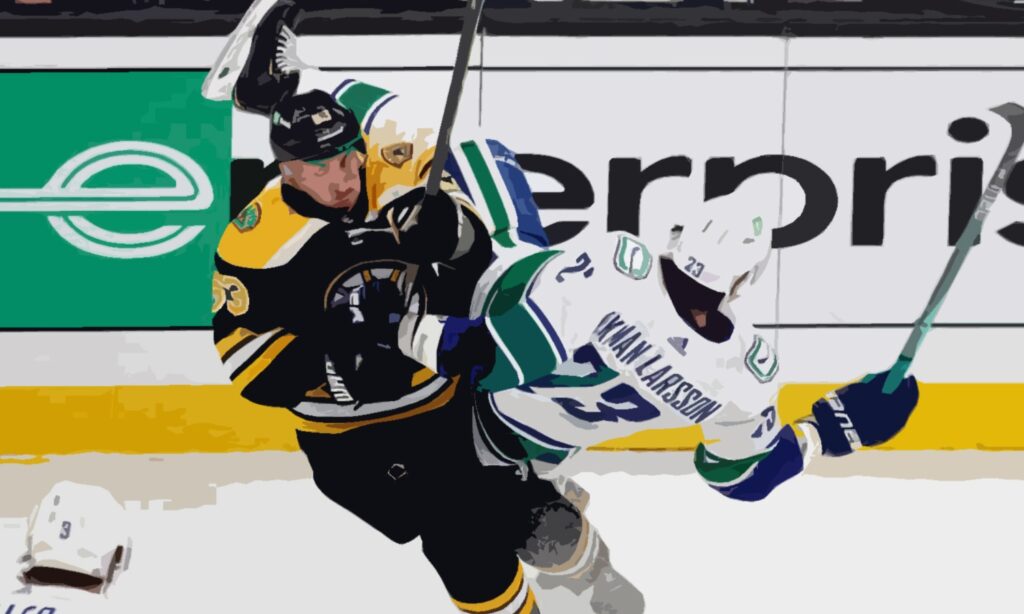In hockey, there are illegal plays that result in a game stoppage or penalty calls.
Your standard game stoppages include offside, icing and puck over glass.
While players are not disciplined for carrying out these violations, the location of the subsequent face-off may favor the opposition.
This is particularly true for icing and intentional offsides.
Meanwhile, there are many types of illegal plays that can lead to penalty calls.
We are talking about punishable infractions such as tripping, hooking, holding and slashing.
These penalties are called almost every hockey game.
One lesser-known infraction is referred to as slew footing. As the name implies, it involves an illegal use of the foot.
Let me break it down further.
What is Slew Footing in Hockey?
Slew footing is an illegal play in ice hockey where one player uses their skate or leg to clip their opponent's legs out from under them, causing them to fall. Most slew foots result in a 2-minute minor penalty unless an injury is sustained.
For more serious slew foots, the offending player may be subject to a major penalty, a game misconduct and possible suspension.
If the NHL deems a suspension is too severe, they may elect to simply fine the player.
In some cases, the offending player may push their opponent's upper body backward with an arm or elbow while clipping the leg.
This would cause the player to hit the ice more violently and could lead to a major penalty even if no injury was sustained.
Dangerous NHL Slew Footing Incidents
While there have been several incidents of slew footing in the NHL, one that stands out was the play involving Brad Marchand of the Boston Bruins and Oliver Ekman-Larsson of the Vancouver Canucks.
During a game between the two teams in 2021, Marchand slew-footed Ekman-Larsson, causing him to fall dangerously by the boards.
While no penalty was called on the play and Ekman-Larsson quickly got back up, the league was not impressed.
While Marchand has tried to clean up his “dirty player” image, this incident set him back again.
He’s been suspended several times (7), one of those also being a slew foot on Derick Brassard back in 2015.
In the end, NHL’s Department of Player Safety handed Marchand a three-game suspension and a fine of $91,875.00 USD.
And if you think that was the last time, he did it again most recently to Oliver Bjorkstrand of the Seattle Kraken.
Since the incident happened after a whistle, the play was deemed a “dangerous trip” by the league.
Marchand was fined $5,000 USD for the infraction, with no suspension.
Slew Footing Hockey Canada
Hockey Canada has also modified their punishment for slew footing dating back to 2016.
Players found guilty of the offense will be given a double-minor penalty rather and a game misconduct if the targeted player was standing still.
However, if the targeted player was moving or sustained an injury, the offending player will be assessed an automatic match penalty.
Slew foots remain a cautionary tale about the dangers of illegal and dangerous plays in hockey and the need for strong enforcement of rules to protect players' safety.
Final Thoughts
Although slew footing may not be as severe as a slash, cross-check, an open ice hit or charge, it’s considered very dirty.
From my experience playing hockey, slew foots are typically intentional.
What makes it worse is that the targeted player doesn’t even know it’s coming and is not a threat to score.
The reason I say this is that the target needs to be at a standstill for the opponent to pull off the slew foot.
Furthermore, slew foots are seen as provocative and will draw the attention of players from both teams.
You’ll see the referees intervene as quickly as possible to prevent a melee.
As the player causing the slew foot, you’re sending a message to the other team that you’re not playing nice.
If not contained by the referees immediately, expect some form of retaliation from the other team.

